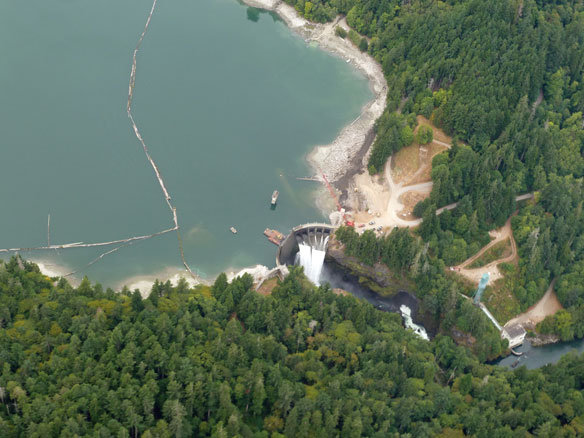
Elwha River Dam, the largest dam removal project ever attempted in the U.S, 2011. Photograph: © SAF — Coastal Care
Excerpts;
The sand used to construct towns and cities leads to development that then impedes sand’s natural flow from watersheds, diminishing one of its best sources of replenishment…
Read Full Article; The Coast News (05-17-2018)
Dams – Cutting off our Beach Sand; By Gary Griggs (12-19-2014)
DamNation; a Documentary That’s Testing the Waters of Corporate Social Responsibility; Produced by Stoecker Ecological and Felt Soul Media” and presented by Patagonia.
DamNation is a feature documentary, shown this week at SXSW in Austin, Tx. DamNation’s majestic cinematography and unexpected discoveries move through rivers and landscapes altered by dams, but also through a metamorphosis in values, from conquest of the natural world to knowing ourselves as part of nature…
Let’s Talk About Sand: “Sand Wars” Film Director Denis Delestrac, At TEDxBarcelona
Sand, Rarer Than One Thinks: A UNEP report (GEA-March 2014)
Despite the colossal quantities of sand and gravel being used, our increasing dependence on them and the significant impact that their extraction has on the environment, this issue has been mostly ignored by policy makers and remains largely unknown by the general public.
In March 2014 The United Nations released its first Report about Sand Mining: “Sand, Rarer Than One Thinks.”
“Sand Wars” film documentary by Denis Delestrac – first broadcasted on the european Arte Channel, May 28th, 2013 in its french version: “Le Sable: enquête sur une disparition”, where it became the highest rated documentary for 2013 – expressly inspired the United Nations Environment Programme (UNEP) to publish this 2014-Global Environmental Alert.
Sand Wars, An Investigation Documentary, By Mutlti-Awards Winner Filmmaker Denis Delestrac (©-2013)
“Sand is the second most consumed natural resource, after water. The construction-building industry is by far the largest consumer of this finite resource. The traditional building of one average-sized house requires 200 tons of sand; a hospital requires 3,000 tons of sand; each kilometer of highway built requires 30,000 tons of sand… A nuclear plant, a staggering 12 million tons of sand…”








